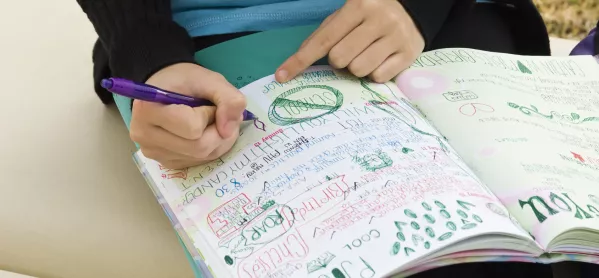I once taught a difficult Year 11 boy.
He was incredibly bright, incredibly talented and incredibly oppositional.
Of our ongoing battles, the biggest was about him being the most prolific doodler that I had ever (and have ever) come across.
The Secret Supply Teacher: Fights, IT fails, no support
Research: Does handing out ‘merits’ improve behaviour?
Opinion: Is there a correct way to praise pupils?
Handling a doodler
The school’s policy clearly stated that pupils were not to draw on their books, so my hands were tied before I even started.
The worst bit was, because of the need for triple-impact marking, we had a back-and-forth written dialogue surrounding it.
“Please can you give me a further example of how footfall would affect a business in a rural area? Please do not doodle on your work.”
“Footfall can have an intense hit on the economy in rural areas because if there is a lack people visiting, although the business may get returning customers, they will struggle to engage new clientele. And why can’t I doodle? It helps me concentrate.”
So, now I was faced with my clear lack of behaviour control in black and white (actually purple) for the next book scrutiny, and the biggest problem was that I couldn’t justify a reason other than “Because the marking policy says so”.
In truth, I didn’t see the problem with it.
Behaviour advice
I doodle in meetings and CPD sessions. I have a dedicated notebook for it. It may look rude, but I am actually listening more intently when I’m drawing, as I often draw pictures of what the speaker is talking about, subconsciously reinforcing and remembering the topic.
So, why was it any different for my student?
He could always answer a question I asked and, on closer inspection, his doodles also reflected what I was talking about (a cash cow may be the best picture I ever saw (think of a cow with jewellery and a sports car and you will be halfway there).
So, if you have a doodler, here is what I suggest you ask yourself.
1. Can you change the rules?
Use pupil voice to drive effective and useful changes to school policy. It will help to frame the question “Why are we doing this?”
And if the answer is “Because that’s what we do”, in an environment of progressive, traditional or evidence-based teaching, whichever camp you’re in, is this ever a good enough response?
2. Is there a compromise?
After much back and forth, the pupil and I agreed that he would cover his book and that the second page from the back would be his doodling space, if he deviated from there, or was caught not paying attention because he was mid doodle, we had a pre-agreed and suitable sanction.
3. Is this a SEND issue?
Support doesn’t always look like a TA sitting next to a pupil and keeping them on task. If a pupil is on any supportive plan, and this is a measure that helps them to access the curriculum, then write it into that plan.
4. Is it really disruptive?
Identifying the difference between a destructive vandal and a constructive doodler will help to clarify how you can move forward and deal with the situation.
Nikki Cunningham-Smith is an assistant headteacher in Gloucestershire and tweets @_MrsC_S




